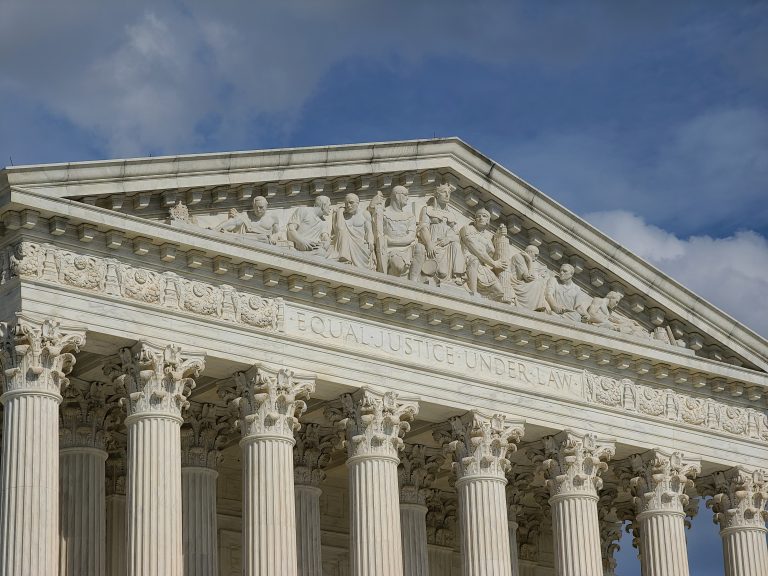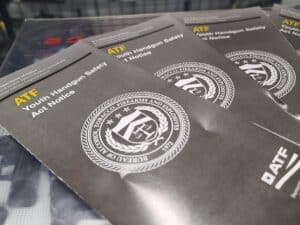The Supreme Court has more incentive than ever to weigh in on the Trump-initiated bump stock ban. If it does, the implications could extend to Biden’s gun orders.
On Tuesday, a three-judge panel for the Sixth Circuit Court of Appeals ruled in favor of a Kentucky man who challenged the legality of the ATF’s administrative ban on bump stocks. The unanimous panel ruled that it is unclear whether bump stocks fit within the current statutory definition of “machinegun” because of the multitude of existing legal opinions on the matter—including from the ATF itself. Therefore, the court determined that the definition should be interpreted to exclude them.
“An Act of Congress could clear up the ambiguities, but so far Congress has failed to act,” Judge Ronald Lee Gilman, a Clinton appointee, wrote on behalf of the court in Hardin v. Garland. “The Bureau of Alcohol, Tobacco, Firearms and Explosives (the ATF) has been on both sides of this issue, with its current regulation (the Rule) banning bump stocks as a machinegun part. In this situation, the rule of lenity that is applicable to criminal offenses requires us to rule in favor of Hardin.”
In other words, because the legal experts tasked with evaluating the regulation and the agency that administered it can’t seem to agree on whether bump stocks are machineguns, an average citizen cannot be subject to criminal enforcement.
The ruling is significant for two reasons.
The first is that it now marks the second time this year alone that a federal appeals court has ruled against the ban. In January, the Fifth Circuit Court of Appeals determined that the prohibition was clearly wrong.
“A plain reading of the statutory language, paired with close consideration of the mechanics of a semi-automatic firearm, reveals that a bump stock is excluded from the technical definition of ‘machinegun’ set forth in the Gun Control Act and National Firearms Act,” Judge Jennifer Walker Elrod wrote for the majority in Cargill v. Garland.
With two federal appeals courts having now called the ban into question—one in far more forceful terms than the other—more may follow. Additionally, the Supreme Court may feel compelled to weigh in. Before this year, federal appellate courts had all upheld the ban in various challenges. When those decisions were ultimately appealed to the Supreme Court, the justices denied the request to review those decisions in each and every case.
With circuit courts now split on the ban’s legality and, in some cases, divided on the rationale for why the ban is unlawful, the question is more ripe than ever for Supreme Court clarification.
That, in turn, could be significant for another reason: the potential ramifications for President Biden’s ATF rules on unfinished gun parts and pistol braces. Like former President Trump in the case of bump stocks, President Biden also directed the ATF to issue new rules banning firearm parts. Much like with bump stocks, the parts he sought to ban were also previously blessed by the ATF as legal for years before a politically-directed reversal. That means they could be susceptible to the same legal infirmities identified in the rulings against the bump stock ban.
“The viability of competing interpretations is exemplified not only by the myriad and conflicting judicial opinions on this issue, but also by the ATF’s own flip-flop in its position,” Judge Gilman wrote of that ban.
Those “flip-flops” refer to no less than ten separate determination letters issued by the agency’s Firearms Technology Industry Services Branch (FITSB) to various bump stock manufacturers between 2008 and 2017, assuring them that they were not machineguns.
“In order to use the installed device, the shooter must apply constant forward pressure with the non-shooting hand and constant rearward pressure with the shooting hand,” former FITSB Chief John Spencer wrote in a 2010 determination letter. “Accordingly, we find that the ‘bump-stock’ is a firearm part and is not regulated as a firearm under Gun Control Act or the National Firearms Act.”
Similar letters were issued as recently as April 2017, just six months before the Las Vegas mass shooting that prompted Trump to order the agency to reverse its position.
A similar paper trail exists for the ATF’s past position toward unfinished firearm parts and pistol braces attached to rifles with barrels shorter than 16 inches. So, courts may determine that the ATF has once again demonstrated its interpretations of federal gun laws are not clear nor enforceable.
The Supreme Court may be an unfavorable venue for the ATF rules, as the conservative majority has already shown it is suspicious of administrative power it views as exceeding Congressionally delegated authority.
Of course, it remains to be seen if the Court will agree to take up a bump stock case. It could be that the Court continues to kick the can on the question despite the divergent opinions on the matter developing in the lower federal courts. After all, it only agrees to hear about one percent of all cases that apply for certiorari every year.
The Department of Justice is also calling for the Court to take the case, which may add to the urgency. If it does take up the case, the outcome could have significant implications for the millions of gun owners affected by the ATF rules without ever addressing a single Second Amendment question.







Only Members can view comments. Become a member today to join the conversation.